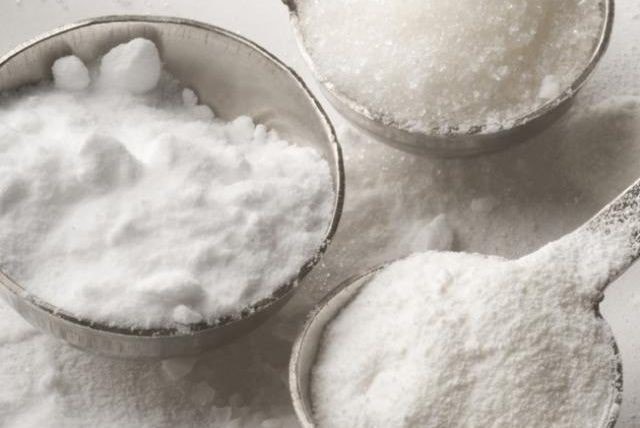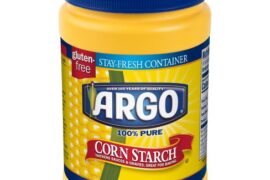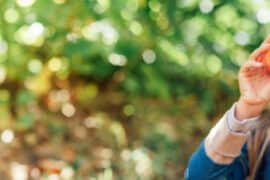Joyful Baking Adventures: Understanding Baking Soda and Bicarb Soda
Hello there, wonderful parents! Ready to sprinkle a little magic into your family’s kitchen antics? Today, we’re diving into the bubbly world of baking soda and bicarb soda. If you’ve ever been perusing a recipe or standing in the baking aisle wondering what on earth the difference is between these two, you’re in the perfect place!
What’s in a Name? Unveiling the Mystery
First, let’s clear up a common mystery. Baking soda and bicarb soda are actually one and the same! That’s right – they’re merely different names used for the same ingredient. Here in the states, we love to call it baking soda, but our friends down under in Australia or over in the UK might refer to it as bicarbonate of soda or bicarb soda for short. They’re all a white, crystalline powder that’s a whiz at leavening baked goods, and they share the same chemical formula: NaHCO3.
Embracing Chemistry in Baking
Let’s put our chemistry hats on for a moment – don’t worry, I promise to keep it fun! When baking soda – or bicarb soda, if you prefer – is mixed with moisture and an acidic ingredient (like lemon juice, vinegar, or buttermilk), a chemical reaction occurs. This reaction produces carbon dioxide gas, which forms bubbles that cause dough or batter to rise. That means fluffier pancakes and sky-high cakes for the whole family!
Substituting Wisely
Now, if you’ve ever been in a pinch while making your little one’s birthday cake or some cookies for a school event, you might wonder about substitutes. While substituting baking powder for baking soda is possible, it’s not a simple one-to-one switch. Baking powder already contains acid and just needs moisture to react, whereas baking soda needs an acidic component. A dash of kitchen know-how can save your treats from turning into culinary flops!
Storage Smarts: Keeping Your Leaveners Fresh
Every seasoned (and even not-so-seasoned) baker needs to know the best way to keep their baking soda fresh. Moisture and other contaminants can turn your magical powder into a less-effective ingredient. Keeping it sealed tightly in its original box or in an airtight container can prolong its shelf life. An old home trick is to place an open box of baking soda in the refrigerator to absorb odors, but don’t go using this for your delicious confections, as it might not be as potent as you need it!
Cooking and Cleaning: Baking Soda’s Versatility
While we adore baking soda for its prowess in the oven, it’s also a hero in the cleaning world! Its gentle abrasive quality and deodorizing power can work wonders in your daily chores. And as parents, we know the importance of non-toxic, child-friendly cleaning solutions in the home. A solution of baking soda can even be used to make homemade play clay – a fun, safe, and inexpensive activity for kids.
Oh, and did you know it has other secret superpowers? Shh, don’t tell the cookies, but baking soda is a terrific tenderizer for meats and can give your beans a quicker cook time – talk about a kitchen multitasker!
Final Baking Soda Wisdom Tips
Before we conclude this section of our baking soda and bicarb soda guide, here’s a little extra wisdom to ensure that you’re the wielder of baking might!
- Test for Freshness: An easy way to test if your baking soda is still active is to drop a spoonful into a bowl of vinegar. If it bubbles up fiercely, it’s good to go!
- No Flavor Mix-ups: Remember, baking soda is unscented and has a slightly salty, alkaline taste, so store it away from spices to prevent flavor transfer.
- Empower the Kids: Encourage your little sous-chefs by explaining how baking soda helps their favorite treats rise, turning kitchen time into an educational science experiment.
Stay tuned for more insightful tips and joyful discoveries in baking. We’re just getting started unraveling the wonders of baking soda and bicarb soda for your family’s culinary creations. Baking with your kids can create precious moments and delicious treats, making memories that rise just like your scrumptious cakes and cookies!

5 Things Parents Should Know When Preparing with Baking Soda
Baking adventures are a great way to bond with your children while also imparting some nifty nuggets of science. Here are five essential tips for parents preparing to use baking soda, also known as bicarb soda, in their kitchen escapades:
1. Understanding Measurements and Ratios
When a recipe calls for baking soda, precise measurements are key. Too much can cause your baked goods to collapse or develop an unpleasant taste. Typically, the rule of thumb is about 1/4 teaspoon of baking soda per cup of flour. Be sure to level your teaspoons for accuracy, and if you’re ever in doubt, err on the side of caution and use a little less rather than more.
2. Pairing with Acidic Ingredients
Baking soda needs an acidic counterpart to activate and help your dough rise. Common acidic ingredients used in baking include yogurt, lemon juice, buttermilk, molasses, and brown sugar. Make sure your recipe includes one of these elements, or your results might be a tad on the flat side.
3. Freshness Matters
Though it has a long shelf life, baking soda can lose its oomph over time. To ensure it’s still active, perform the simple vinegar test mentioned previously. This not only guarantees a successful rise but also a fun and fizzy science demonstration for the kids!
4. Timing is Everything
Once you’ve mixed your wet and dry ingredients, the clock starts ticking! That’s because the reaction between baking soda and the acidic elements begins immediately. To capture all that leavening power, pop your batter into the oven posthaste. This means having your pans prepared and oven preheated in advance.
5. Embrace the Learning Opportunities
With each teaspoon of baking soda, there’s a chance to teach your children about science. Explain how the baking soda reacts and creates carbon dioxide, which then expands in the heat of the oven to make those cupcakes irresistibly light and fluffy. Transform your kitchen into a mini laboratory and your baking session into an exciting and educational experience.
Now, we’ve equipped you with the basics of baking soda, a staple in both cooking and science experiments you can enjoy with your children. Remember, this versatile white powder is more than just an ingredient; it’s a vessel for learning, a pinch of fun, and the secret to deliciously airy baked treats!
As you continue to unveil the marvels of baking soda in your cozy kitchen, remember to include your inquisitive little ones in the magic. Encourage them to measure, mix, and marvel alongside you, nurturing their growing minds with every delightful bake. The joys of baking together, wrapped in aprons and dusted with flour, are the recipes for cherished moments and an appetite for learning that lasts a lifetime.
May your ovens stay warm and your cakes rise to new heights. Happy baking, dear parents!
For more great articles please see here. For more information see here
Disclaimer
The articles available via our website provide general information only and we strongly urge readers to exercise caution and conduct their own thorough research and fact-checking. The information presented should not be taken as absolute truth, and, to the maximum extent permitted by law, we will not be held liable for any inaccuracies or errors in the content. It is essential for individuals to independently verify and validate the information before making any decisions or taking any actions based on the articles.




